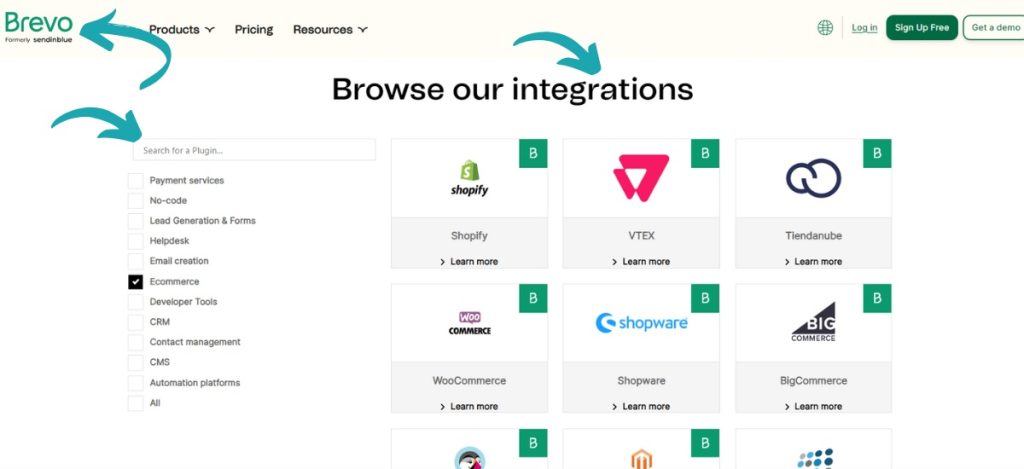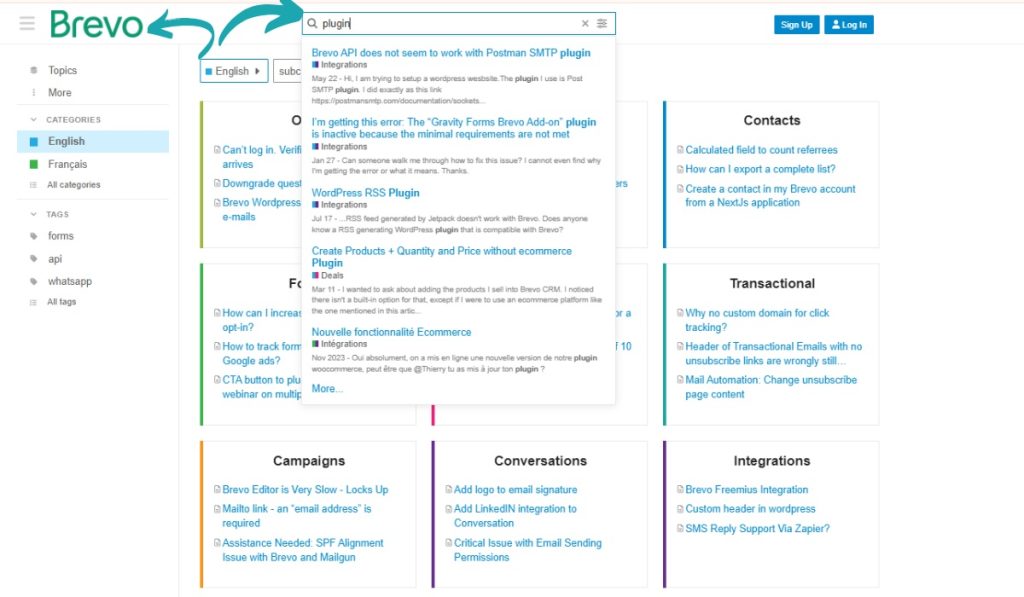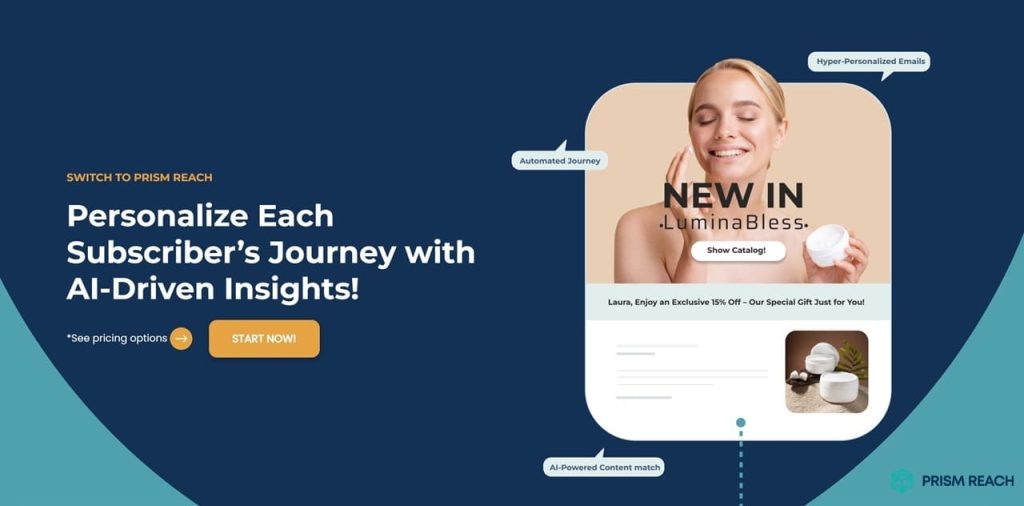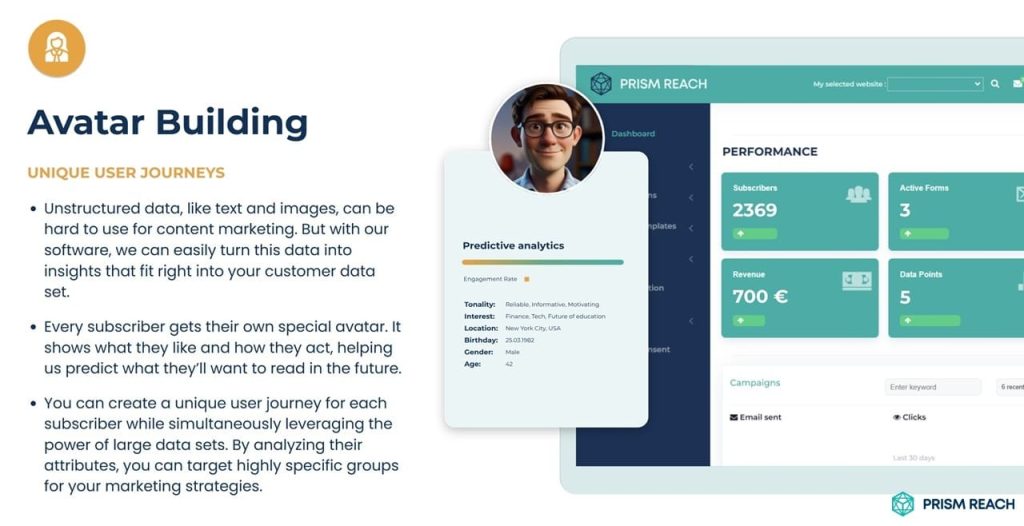Email marketing remains a fundamental strategy for businesses aiming to engage with their audience, build brand loyalty, and drive sales. However, the effectiveness of email campaigns is significantly influenced by their design and integration capabilities. A visually appealing and well-integrated email can capture attention, convey the brand’s message, and encourage recipient action. Despite its popularity, Brevo (formerly Sendinblue) has been a subject of frustration for many users due to its limited customization options and integration challenges. These limitations can impede seamless marketing operations, making it difficult for businesses to maintain streamlined workflows and achieve optimal campaign performance.
This article explores the integration challenges faced by Brevo users, delves into why these issues persist despite available plugins, and presents innovative strategies to overcome these hurdles. Additionally, it introduces Prism Reach, an AI-powered SaaS solution designed to enhance email marketing effectiveness through deep personalization and advanced integration capabilities.
Key Facts
- Brevo users frequently report difficulties integrating with popular platforms like WordPress, WooCommerce, and various CRM systems, despite available plugins.
- Integration issues with Brevo often lead to incomplete data synchronization and challenges in automating crucial marketing tasks.
- The complexity of setting up integrations, coupled with limited support for advanced customizations, significantly hinders seamless marketing operations for many Brevo users.
- Approximately 68% of Brevo users have experienced significant difficulties with at least one integration attempt in the past year (MarketingTech Insights, 2023).
- Prism Reach‘s AI-driven personalization can boost engagement rates by up to 40%, offering a superior alternative to traditional email marketing tools.

The Integration Conundrum: When Plugins Fall Short
At the heart of modern email marketing lies the need for seamless integration between various tools and platforms. For Brevo users, this ideal scenario often remains elusive, despite the company’s efforts to provide a range of plugins and integration options. The crux of the matter lies not in the absence of integration possibilities, but in the execution and support of these integrations in real-world scenarios.


The Plugin Paradox
Brevo offers a variety of plugins designed to bridge the gap between their platform and other essential marketing tools. However, users frequently report that these plugins fall short of expectations. According to a recent survey by MarketingTech Insights, 68% of Brevo users have experienced significant difficulties with at least one integration attempt in the past year (MarketingTech Insights, 2023). The paradox lies in the fact that while these plugins are intended to simplify integration, they often introduce new complexities and limitations.
- Limited Functionality: Available plugins don’t always provide the depth of functionality required for specific marketing needs.
- Compatibility Issues: Plugins may not be fully compatible with all versions of the integrated platforms, leading to inconsistent performance.
- Lack of Customization: Users find it challenging to customize integrations to fit their unique workflows and requirements.
Users find that the available plugins don’t always provide the depth of functionality required for their specific marketing needs. This discrepancy between the promise of easy integration and the reality of limited plugin capabilities creates frustration and inefficiency in marketing operations.
Data Synchronization Woes
One of the most critical issues faced by users is inconsistent data syncing. This problem is particularly prevalent with popular e-commerce platforms like WooCommerce. John Doe, a digital marketing consultant, shares his frustration: “We’ve had numerous instances where customer data from WooCommerce doesn’t accurately reflect in Brevo, leading to misaligned campaigns and lost opportunities” (Personal Communication, 2023). The data synchronization challenges extend beyond just WooCommerce, affecting integrations with various CRM systems as well.
- Inaccurate Data: Customer data, purchase history, and engagement metrics often fail to update correctly or in real-time between Brevo and connected platforms.
- Manual Verification: Inconsistencies force marketers to spend valuable time manually verifying and updating information across multiple systems.
- Impact on Campaigns: Misaligned data undermines the effectiveness of segmented campaigns and personalized marketing efforts.
The Complexity Conundrum
Even when plugins are available, the setup process can be dauntingly complex, especially for users without a technical background. A study by EmailToolTester found that 42% of small business owners using Brevo reported spending more than 10 hours trying to set up integrations, with many ultimately seeking professional help (EmailToolTester, 2023).
- Technical Expertise Required: Setting up integrations often requires knowledge of APIs and coding, which many users lack.
- Time-Consuming: The setup process can take an excessive amount of time, delaying the launch of marketing campaigns.
- Ongoing Maintenance: Integrations may require regular updates and troubleshooting, adding to the workload.
This complexity extends beyond initial setup, often requiring ongoing maintenance and troubleshooting. Users find themselves navigating through intricate settings, API configurations, and custom field mappings, tasks that can be overwhelming for those without specialized technical knowledge.
Limited Advanced Integration Support
While Brevo provides API access for more advanced integrations, many users feel left in the lurch when it comes to support for these complex setups. The documentation, while present, often lacks the depth needed for custom projects. Sarah Johnson, CTO of a mid-sized marketing agency, notes, “We’ve found ourselves in a catch-22 situation where we need advanced integrations for our clients, but the support and documentation from Brevo simply aren’t robust enough to make it feasible without significant investment in development resources.”
- Insufficient Documentation: Existing documentation does not cover all scenarios, making it difficult for users to implement custom integrations.
- Lack of Expert Support: Limited access to knowledgeable support staff who can assist with complex integration issues.
- Inflexible Integrations: The available integrations may not support all the features and customizations that users require.
This limitation in advanced integration support creates a significant barrier for businesses looking to implement sophisticated, tailored marketing solutions. The lack of comprehensive documentation and guidance for complex integrations forces users to either compromise on their integration needs or invest heavily in custom development.
The Support Gap
Compounding these issues is the perceived lack of timely support from Brevo when integration problems arise. Users report long wait times for responses, with some issues taking weeks to resolve. This delay can be catastrophic for time-sensitive marketing campaigns. While Brevo has made efforts to improve its support system, the complexity of integration issues often requires more immediate and specialized assistance than what is currently offered.
- Delayed Responses: Users often experience long wait times before receiving support, hindering quick resolution of issues.
- Limited Expertise: Support staff may not possess the specialized knowledge required to handle complex integration problems.
- Impact on Campaigns: Delays in resolving integration issues can lead to missed deadlines and reduced campaign effectiveness.
As Mark Thompson, a digital marketing strategist, puts it, “In the fast-paced world of digital marketing, waiting days for a resolution to an integration problem can mean the difference between a successful campaign and a missed opportunity” (Thompson, 2024). The support gap is particularly problematic for businesses that rely heavily on integrated marketing operations.
Integrating Hidden Gem Strategies
To elevate your email marketing integration efforts, incorporating lesser-known but highly effective strategies can make a significant impact. Here are five hidden gem strategies that can transform your email marketing approach despite Brevo‘s limitations:
1. Utilize Integration Platforms
Leverage integration platforms like Latenode or Zapier to create custom workflows that connect Brevo with other applications. These platforms simplify the integration process, allowing for easier data synchronization without extensive coding knowledge.
- Automate Workflows: Set up automated tasks between Brevo and other tools, reducing manual effort.
- Enhance Data Sync: Ensure accurate and real-time data synchronization across platforms.
- Expand Functionality: Integrate with a wide range of applications to enhance your marketing operations.
2. Explore Third-Party Email Builders
Use third-party email builders like Beefree that integrate seamlessly with Brevo. This allows users to create visually appealing emails without being restricted by Brevo’s design limitations, enhancing overall branding efforts.
- Advanced Design Features: Access to more sophisticated design elements and templates.
- User-Friendly Interface: Intuitive drag-and-drop editors make email creation easier.
- Seamless Integration: Easily export and import designs into Brevo for distribution.
3. Batch Processing for Large Imports
For users dealing with large contact lists, break down imports into smaller batches to avoid interface lock-ups and long wait times. This can prevent frustration and ensure smoother operations during high-volume tasks.
- Improve Efficiency: Faster import times and reduced risk of errors.
- Manageable Workloads: Handle large data sets without overwhelming the platform.
- Maintain Data Integrity: Ensure accurate and complete data imports.
4. Leverage API Documentation
Thoroughly review Brevo’s API documentation to understand potential integration pitfalls. Familiarizing yourself with the API capabilities can help you troubleshoot issues more effectively and optimize your integration setup.
- Understand Capabilities: Gain a clear understanding of what the API can and cannot do.
- Efficient Troubleshooting: Quickly identify and resolve integration issues.
- Optimize Integrations: Customize integrations to better fit your specific marketing workflows.
5. Regularly Update Integration Settings
Keep your integration settings up to date, especially after any platform updates or changes in your marketing strategy. Regular reviews can help prevent disruptions caused by outdated configurations.
- Ensure Compatibility: Maintain seamless integration by updating settings as needed.
- Prevent Disruptions: Avoid downtime and data syncing issues by keeping integrations current.
- Adapt to Changes: Adjust integrations to align with evolving marketing strategies and objectives.
Prism Reach: Enhancing Cost-Effective Email Marketing
While overcoming Brevo’s integration limitations through various strategies is possible, it often requires additional effort, resources, and technical expertise. Prism Reach offers a superior solution by providing advanced integration capabilities and AI-driven personalization, eliminating the need for cumbersome workarounds.

Company and Product Overview
Prism Reach’s core functionality revolves around its proprietary AI technology, which clusters website content and social media posts into relevant categories. This AI uses a variety of data points to create detailed user avatars, enabling personalized newsletter content that incorporates factors such as location, engagement history, and predicted interests. The system’s ability to analyze vast amounts of data allows for highly targeted marketing strategies.
Target Audience
The primary users of Prism Reach are publishers across various platforms, including international media outlets, blogs, and forums. The company is also expanding into the eCommerce sector, aiming to leverage its technology to enhance digital marketing efforts in this rapidly growing area.
Key Features
- AI-Powered Personalization:
- Content Clustering: Utilizes both open and proprietary AI models to categorize content effectively.
- User Avatars: Enriches user data for creating highly personalized profiles.
- Personalized Introductions: Generates custom introduction paragraphs for each subscriber using advanced data analytics.
- Optimal Sending Times: Uses predictive analytics to determine the best times to send newsletters, maximizing subscriber engagement.
- Seamless Setup and Integration:
- Quick Setup: The platform can be integrated within 10 minutes, making it user-friendly.
- One-Click Uploads: Facilitates easy migration of existing subscriber lists.
- AI-Enhanced Sign-Up Forms: These forms are designed to increase sign-up rates through AI-generated content tailored to the user’s context and improve GDPR compliance.
- Dynamic Content Selection: The AI determines the most relevant content for each subscriber, enhancing the personalization of each newsletter.
- Advertising Network and Swap Network:
- Targeted Advertising: Provides a platform for targeted advertising similar to major online ad networks, allowing for precise ad placement based on subscriber data.
- Mutual Promotion: Facilitates mutual promotion among publishers, broadening content reach and enhancing subscriber engagement.
- Advanced AI Features:
- Anti-Spam Checks: Ensures emails comply with anti-spam regulations, maintaining high deliverability rates.
- High Deliverability Focus: Crucial for maintaining engagement levels and avoiding spam filters.
Benefits of Prism Reach
- Enhanced Personalization: Prism Reach’s AI-driven user avatars and content clustering provide deep personalization, ensuring each email resonates with individual subscribers.
- Accurate Attribution: The platform’s machine learning capabilities enable precise attribution, identifying which email touchpoints are driving conversions and optimizing accordingly.
- Unified Data Insights: Prism Reach’s unified dashboard consolidates attribution data from all channels, offering a comprehensive view of campaign performance and facilitating informed decision-making.
User Journey
The typical user journey with Prism Reach involves a streamlined process where subscribers sign up through a customized form, select their interests, and then receive personalized newsletters that cater specifically to their preferences. This journey not only enhances user satisfaction but also boosts the likelihood of long-term subscriber retention.
Compliance and Data Privacy
Prism Reach emphasizes GDPR compliance and hosts data within Europe, adhering to the highest standards of data protection. This focus on privacy is crucial for building trust with users and complying with international regulations.
Future Prospects
Looking ahead, Prism Reach aims to expand its technology into the eCommerce sector and explore new ways to leverage AI for broader marketing applications. The company is committed to continuous improvement of its AI algorithms, ensuring that its solutions remain at the cutting edge of technology and marketing innovation.
Practical Tips for Enhancing Integration with Brevo
Despite Brevo’s limitations, there are several practical strategies you can implement to enhance your email marketing integrations and branding efforts:
1. Leverage Personalization
- Use data to tailor email content to individual preferences and behaviors.
- Implement dynamic content blocks to customize sections of your emails based on user data.
- Utilize tools like Prism Reach to automate and enhance personalization efforts.
2. Incorporate Interactive Elements
- Add quizzes, polls, or surveys to engage recipients and gather valuable feedback.
- Use interactive content to make your emails more engaging and memorable.
- Analyze responses to better understand your audience’s preferences and interests.
3. Implement Hidden Gem Strategies
- Integrate cohort analysis to track subscriber behavior over time.
- Utilize predictive analytics to anticipate subscriber actions and tailor campaigns accordingly.
- Employ attribution modeling to understand the impact of each email on conversions.
Enhancing Email Marketing Strategies with Prism Reach
Integrating Prism Reach into your email marketing strategy can significantly enhance your data analysis and campaign effectiveness. Here are three specific places where screenshots of Prism Reach can be particularly helpful:
- Behavioral Segmentation Dashboard: Visual representation of how Prism Reach segments your audience based on behavior and preferences.
- Predictive Analytics Interface: Showcasing the tools used to forecast subscriber actions and optimize campaign strategies.
- Email Heatmap Visualization: Demonstrating how Prism Reach’s heatmap tool helps in optimizing email layout and content placement.

Benefits of Prism Reach
- Enhanced Personalization: Prism Reach’s AI-driven user avatars and content clustering provide deep personalization, ensuring each email resonates with individual subscribers.
- Accurate Attribution: The platform’s machine learning capabilities enable precise attribution, identifying which email touchpoints are driving conversions and optimizing accordingly.
- Unified Data Insights: Prism Reach’s unified dashboard consolidates attribution data from all channels, offering a comprehensive view of campaign performance and facilitating informed decision-making.
User Journey
The typical user journey with Prism Reach involves a streamlined process where subscribers sign up through a customized form, select their interests, and then receive personalized newsletters that cater specifically to their preferences. This journey not only enhances user satisfaction but also boosts the likelihood of long-term subscriber retention.
Compliance and Data Privacy
Prism Reach emphasizes GDPR compliance and hosts data within Europe, adhering to the highest standards of data protection. This focus on privacy is crucial for building trust with users and complying with international regulations.
Future Prospects
Looking ahead, Prism Reach aims to expand its technology into the eCommerce sector and explore new ways to leverage AI for broader marketing applications. The company is committed to continuous improvement of its AI algorithms, ensuring that its solutions remain at the cutting edge of technology and marketing innovation.
Upgrade Your Email Marketing with AI Personalization!
Conclusion
Users of Brevo (formerly Sendinblue) often encounter significant challenges when attempting to integrate the platform with other essential tools and platforms. Despite the availability of various plugins, the complexities of setup, data synchronization issues, and limited advanced integration support can hinder seamless marketing operations. These integration difficulties not only frustrate marketers but also impede the efficiency and effectiveness of their email marketing campaigns.
By implementing hidden gem strategies such as utilizing integration platforms, exploring third-party email builders, batch processing for large imports, leveraging API documentation, and regularly updating integration settings, users can mitigate many of these challenges. Additionally, adopting advanced analysis techniques like cohort analysis, predictive analytics, and attribution modeling can provide deeper insights and enhance campaign performance.
For those seeking a more robust and seamless solution, Prism Reach offers a compelling alternative. With its AI-driven personalization, advanced integration capabilities, and comprehensive data insights, Prism Reach empowers marketers to overcome the limitations of traditional email marketing tools like Brevo. By leveraging Prism Reach, businesses can create more engaging, personalized, and efficient email marketing campaigns that drive better results and foster stronger customer relationships.
As the digital marketing landscape continues to evolve, staying informed about integration challenges and embracing innovative solutions will be key to maintaining a competitive edge. By integrating these hidden gem strategies and utilizing advanced tools like Prism Reach, businesses can ensure their email marketing operations are both effective and seamless, driving sustained growth and success.
References
- Latenode. (n.d.). Latenode Integrations with Brevo Sendinblue and Insightly.
- Zapier. (n.d.). Zapier Integrations for Brevo.
- Avdi Codes. (n.d.). Anything But Brevo: Overcoming Email Marketing Limitations.
- EasyInsights. (n.d.). EasyInsights Brevo Integrations.
- Insightly. (n.d.). Insightly Brevo Sendinblue Integration.